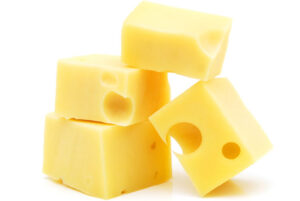Disodium Dihydrogen Pyrophosphate has garnered considerable attention as a protein stabilizer. This blog delves into the role of Disodium Dihydrogen Pyrophosphate, its function, its principles as a protein stabilizer in food, and its applications in various food products.
Brief Introduction to Disodium Dihydrogen Pyrophosphate
Disodium Dihydrogen Pyrophosphate also known as Sodium Acid Pyrophosphate, is a food additive with the chemical formula Na2H2P2O7. Widely used in the food industry, it serves as a multifunctional additive, with one of its prominent functions being protein stabilization. The underlying principle of Disodium Dihydrogen Pyrophosphate as a protein stabilizer lies in its molecular structure, which allows it to interact with proteins, thereby maintaining their stability.
Protein Stabilization Function of Disodium Dihydrogen Pyrophosphate in Food
 Proteins are fundamental to the characteristics of many food products, including texture, taste, structure, and appearance. However, proteins are often sensitive to external factors such as temperature, pH levels, and changes in ionic strength. These variations can lead to protein aggregation, precipitation, or loss of functionality, significantly impacting the overall quality of food products. Therefore, protein stabilizers are essential to ensure that food maintains stable protein characteristics during processing and storage.
Proteins are fundamental to the characteristics of many food products, including texture, taste, structure, and appearance. However, proteins are often sensitive to external factors such as temperature, pH levels, and changes in ionic strength. These variations can lead to protein aggregation, precipitation, or loss of functionality, significantly impacting the overall quality of food products. Therefore, protein stabilizers are essential to ensure that food maintains stable protein characteristics during processing and storage.
Protein Stabilization Principle of Disodium Dihydrogen Pyrophosphate in Food
The principles of Disodium Dihydrogen Pyrophosphate as a protein stabilizer encompass multiple facets:
- Electrostatic Attraction and Dispersing Action: Disodium Dihydrogen Pyrophosphate’s molecular structure contains negatively charged sites, while proteins typically possess positively charged sites. This charge difference results in mutual electrostatic attraction, forming a complex network. This aids in maintaining protein dispersion, preventing protein aggregation or precipitation. Under this attractive force, Disodium Dihydrogen Pyrophosphate acts as a stabilizing “force field,” evenly dispersing proteins in the food.
- pH Regulation: Protein stability is often pH-dependent. Inappropriately high or low pH conditions can cause protein precipitation or aggregation. Disodium Dihydrogen Pyrophosphate has the ability to regulate pH, ensuring that the food system remains within the pH range where proteins are most stable.
- Chelation of Metal Ions: Disodium Dihydrogen Pyrophosphate can chelate with metal ions present in the food. The presence of metal ions may lead to protein oxidation and denaturation, affecting their stability. By forming complexes, Disodium Dihydrogen Pyrophosphate reduces the impact of metal ions on proteins, mitigating their instability.
- Temperature Stability: Disodium Dihydrogen Pyrophosphate can enhance protein stability at different temperatures. During heating or cooling processes, proteins are prone to denaturation or aggregation. The presence of Disodium Dihydrogen Pyrophosphate helps reduce the risk of denaturation, ensuring that proteins remain stable under varying temperature conditions.
Protein Stabilizer Application of Disodium Dihydrogen Pyrophosphate in Food
Disodium Dihydrogen Pyrophosphate, as a protein stabilizer, finds applications in various food manufacturing processes. Some common examples include:
- Dairy Products: In the production of dairy products such as yogurt and cheese, Disodium Dihydrogen Pyrophosphate helps maintain protein dispersion, ensuring product texture and mouthfeel.
- Meat Products: In the preparation of meat products like sausages and ham, Disodium Dihydrogen Pyrophosphate stabilizes the proteins within the meat, ensuring even distribution.
- Desserts: When making desserts such as mousses and cheesecakes, Disodium Dihydrogen Pyrophosphate can be used to stabilize proteins, preserving the dessert’s texture and mouthfeel.
- Protein Drinks: As a stabilizer in protein beverages, Disodium Dihydrogen Pyrophosphate contributes to maintaining uniformity and texture in the drinks.
In conclusion, Disodium Dihydrogen Pyrophosphate as a protein stabilizer works in food to maintain protein stability, preventing aggregation, precipitation, or denaturation, thereby enhancing the quality and texture of food products. It plays a significant role in dairy products, meat products, desserts, and protein beverages, ensuring that proteins remain in their optimal state.
To gain more understanding of Disodium Dihydrogen Pyrophosphate or ask for a COA, please reach out to [email protected].




